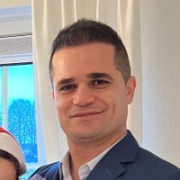

Microsoft Parallel Data Warehouse and SAP BW4HANA compete in the data warehousing category. Microsoft Parallel Data Warehouse has an advantage in cost efficiency and ease of integration with SQL Server, while SAP BW4HANA leads in real-time analytics and integration with SAP products.
Features: Microsoft Parallel Data Warehouse offers high performance, scalability, and cost efficiency with features like MPP processing, clustered column store indexes, and seamless integration with SQL Server. SAP BW4HANA is valued for its advanced data modeling, real-time analytics, and comprehensive predefined content, supporting a wide range of data sources.
Room for Improvement: Microsoft Parallel Data Warehouse faces challenges with SQL Server compatibility and requires expertise in handling large datasets. It could improve integration with non-Microsoft systems. SAP BW4HANA struggles with high costs, complex migration processes, and issues integrating with non-SAP tools, necessitating a better user interface.
Ease of Deployment and Customer Service: Microsoft Parallel Data Warehouse provides varied deployment options, including cloud environments, with generally solid customer support. SAP BW4HANA primarily offers on-premises deployment, leading to higher complexity, and while support generally meets expectations, there are concerns about responsiveness.
Pricing and ROI: Microsoft Parallel Data Warehouse is cost-effective, particularly for large-scale deployments, with customizable pricing models and satisfactory ROI. SAP BW4HANA, while robust, comes with high costs, additional license fees, and negotiation challenges, impacting its value for investment.
I would rate my experience with technical support around six on a scale of 1 to 10 because I have not had a particular experience with technical support.
In the meantime, I found solutions independently and provided two solutions to my client.
I am satisfied with the response time and quality.
I give the scalability an eight out of ten, indicating it scales well for our needs.
As a consultant, we hire additional programmers when we need to scale up certain major projects.
Microsoft Parallel Data Warehouse is stable for us because it is built on SQL Server.
Addressing the cost would be the number one area for improvement.
It would be better to release patches less frequently, maybe once a month or once every two months.
The ETL designing process could be optimized for better efficiency.
Integration needs improvement.
The integration with AI/ML in SAP BW4HANA is currently very limited, which is definitely an area that needs improvement.
Microsoft Parallel Data Warehouse is very expensive.
The certification cost for SAP BW4HANA in 2025 is expected to be one lakh forty thousand.
The columnstore index enhances data query performance by using less space and achieving faster performance than general indexing.
The biggest advantage of Microsoft Parallel Data Warehouse is the possibility to stop or pause the service because it can be very expensive.
There's a feature that allows users to set alerts on triggers within reports, enabling timely actions on pending applications and effectively reducing waiting time.
The capability to handle a large amount of data and perform ETL operations is most valuable.
The best features include the ability to create data sources directly on tables, and perform mapping without creating info objects.
| Product | Market Share (%) |
|---|---|
| SAP BW4HANA | 3.7% |
| Microsoft Parallel Data Warehouse | 1.7% |
| Other | 94.6% |

| Company Size | Count |
|---|---|
| Small Business | 16 |
| Midsize Enterprise | 6 |
| Large Enterprise | 21 |
| Company Size | Count |
|---|---|
| Small Business | 16 |
| Midsize Enterprise | 4 |
| Large Enterprise | 29 |
The traditional structured relational data warehouse was never designed to handle the volume of exponential data growth, the variety of semi-structured and unstructured data types, or the velocity of real time data processing. Microsoft's SQL Server data warehouse solution integrates your traditional data warehouse with non-relational data and it can handle data of all sizes and types, with real-time performance.
SAP BW4HANA is a data warehouse solution developed by SAP for businesses looking to analyze big data in real time. It is designed to run on the SAP HANA database, offering improved performance and optimized processing of large data sets. SAP BW/4HANA provides an array of advanced analytics capabilities, including predictive analytics, text analytics, and spatial data processing. It also offers a modern, intuitive user interface and streamlined data modeling and administration tools, making it easier for businesses to access, manage, and utilize their data.
SAP BW4HANA Features
SAP BW4HANA has many valuable key features. Some of the most useful ones include:
SAP BW4HANA Benefits
There are many benefits to implementing SAP BW4HANA. Some of the biggest advantages the solution offers include:
Reviews from Real Users
SAP BW4HANA is a solution that stands out when compared to many of its competitors. Some of its major advantages are its hierarchical alert slicing, real-time insights, and its ability to transform large amounts of data.
PeerSpot reviewer, Srivatsav A., SAP BW/4HANA Specialist at a government, is very happy with the solution. He explains, "You can do hierarchical alert slicing and dicing out-of-box, which is not available in other solutions. I haven't come across that in Oracle or any other software provider."
“It has got wonderful features in terms of analyzing your production data, and it gives you real-time insight into productive maintenance. You can plan your budget, and you can map them against actuals. It gives you good insights on overall performance and processes,” says Amrit J., ERP Application Manager at an energy/utilities company.
In addition, a Technology Analyst at a tech services company mentions, "The most valuable feature is that we can transform a huge amount of data and apply business logic as per the requirements."
We monitor all Data Warehouse reviews to prevent fraudulent reviews and keep review quality high. We do not post reviews by company employees or direct competitors. We validate each review for authenticity via cross-reference with LinkedIn, and personal follow-up with the reviewer when necessary.